The Google Pixel 2’s main camera is an excellent choice for smartphone photography enthusiasts, but with industry figures suggesting that as many as 30% of all smartphone pictures are now selfies, the performance and image quality of the front camera is becoming more and more important as well.
The Pixel 2’s front camera features a 1/3.2-inch sensor with 8Mp resolution and 1.14µm pixel size. The 27mm-equivalent wide-angle lens is a fixed-focus optic, and full HD 1080p video offers good resolution for Skype calls and live streaming. Other front camera features include a display flash when additional lighting is required, digital zoom, and a Portrait mode for applying a bokeh simulation effect.
Read on to find out how the Pixel 2 front camera performed in our testing.
Key front camera specifications:
- 8Mp resolution
- 1/3.2-inch sensor with 1.14µm pixel pitch
- 27mm-equivalent lens
- Fixed focus
- 1080p video
About DxOMark Selfie tests: For scoring and analysis in our smartphone front camera reviews, DxOMark engineers capture and evaluate over 1500 test images and more than 2 hours of video both in controlled lab environments and in natural indoor and outdoor scenes, using the camera’s default settings. This article is designed to highlight the most important results of our testing. For more information about the DxOMark Selfie test protocol, click here.
Test summary


Achieving an overall DxOMark Selfie score of 77 points, the Google Pixel 2 is a solid choice for the selfie enthusiast, with good results across both still photos and video. The device’s key strengths for stills include good dynamic range, and high levels of detail preservation with acceptable levels of noise. Tested under well-balanced lighting conditions, the Pixel 2 records slightly low target exposures, so faces tend to be underexposed in many of the natural test scenes and particularly in low-light shots taken in the lab. Dynamic range is wide when shooting in high-contrast conditions, ensuring that good detail is maintained in the highlights, although low target exposures and underexposed faces are sometimes still evident.
White balance is fairly accurate under indoor and low-light conditions, recording accurate skin tones and pleasant color, but it can be inconsistent on outdoor images, with a pinkish color cast affecting both skin tones and backgrounds. Texture preservation is a key strength for the Pixel 2, so you can be confident of good detail and well-defined facial features. The device has a tendency to slightly over-sharpen images, which affects skin rendering in some examples, but also ensures good detail in facial features.
Focus is another strong point for the Pixel 2, and although the device features a fixed-focus lens like many of its competitors, good depth of field results in sharpness on faces shot at medium and long range, as well as in backgrounds. Noise is reasonably well-controlled, too, and although it’s more visible compared to some competitors’ devices, it’s the trade-off for the camera’s high level of detail.
The Pixel 2 does a good job shooting video with the front camera, too, with its key strengths accurate target exposures and good detail preservation. So texture in low-light videos holds up well compared to many competitors, although again, the trade-off is a little more noise. Dynamic range isn’t quite as strong as it is with stills, with occasionally clipped highlights. Flare is often visible on videos shot in high-contrast backlit scenes as well. Stabilization is not available, resulting in some wobble when walking or panning, and video color could be improved. Rendering is nice, with accurate white balance, but color casts do occur. So the Pixel 2 is not perfect; but apart from the lack of stabilization, the other issues are not huge concerns, and overall, the Pixel 2 does a pretty decent job of capturing moving images.
Photo scores explained
The Google Pixel 2’s front camera achieves a total photo score of 80, which is calculated from its scores in tests that examine different aspects of its performance under different lighting conditions. In this section, we’ll take a closer look at these image quality sub-scores.

Exposure and Contrast
Google Pixel 2
56
91
The Pixel 2 scores slightly low for exposure, despite good dynamic range. Target exposure is a little low under light sources between 20 and 1000 lux, and noticeably underexposed in low-light conditions of just 5 lux.
As one of the first devices to implement a HDR feature on the front camera, the Pixel 2 generally records good detail in the highlights when you’re shooting in high-contrast conditions. You can see in our “under the bridge” HDR scene, the Pixel 2 records more highlight detail in the background, but the face is underexposed, and the iPhone X ends up providing the best target exposure for the main subject. Some exposure instabilities are also evident across consecutive HDR exposures on the Pixel 2, with more aggressive processing evident on some shots, so in tough conditions it’s worth snapping a few selfies and picking out your favorite later.
The Pixel 2 dropped points in the exposure category because of those underexposed target exposures on faces, which were evident across a range of images shot under different lighting conditions. Some selfie shooters may prefer a more accurately-exposed face than the Pixel 2 generally provides.
A fairly good score for color, with pleasant color rendering and natural skin tones when white balance is accurate. The Pixel 2 lost points for some white balance inconsistencies, however. White balance is generally accurate indoors and in low-light conditions, but pink and blue color casts are often visible outdoors.
Red tones can be inaccurate outdoors, too, with a hue shift giving them a pink and somewhat unsaturated appearance. Slightly undersaturated color, as well as color shading, with color shifts from green in the center to pink at the edges, are noticeable both on indoor and on low-light images, too.

Focus
Google Pixel 2
71
97
A strength for the Pixel 2 is its fixed-focus lens, which provides a large range of focus and good depth of field, while avoiding the focusing irregularities that can occur with autofocus. Focus is best at 55cm (as opposed to around 30cm on many other devices), at which the Pixel 2 achieved an excellent acutance score of 80% in bright light, with very good results of around 70% acutance at 30cm, 90cm, and 120cm, too.
So sharpness remains very acceptable for those close-range selfies shot at 30cm, but best sharpness is provided at 55cm, making the Pixel 2 an interesting choice for users who prefer to incorporate more of the background in their selfies. Good depth of field also ensures that long-range selfies shot at around 120cm from the camera using a selfie stick offer acceptable focus on faces, and backgrounds are generally fractionally sharper than we see on other devices with narrower depths of field, which is good to know if you’re hoping to take lots of tourist and environmental portraits.

Texture
Google Pixel 2
65
85
A very good result for texture, with a high level of detail—over 70% acutance captured in static scenes in both indoor and outdoor images. The Pixel 2 also records very respectable detail in static scenes under indoor lighting (100 lux) and acceptable detail of over 50% acutance in low-light conditions of 20 lux. Scenes containing some subject motion are a little more challenging: although the Pixel 2 delivers good acutance of over 50% in bright light, expect some motion blur when capturing moving subjects under indoor or low-light conditions.
In handheld exposures, detail preservation on the Pixel 2 surpasses both the iPhone X and the Samsung Galaxy S8 in all lighting conditions. In very bright light (1000 lux), texture preservation is notably better, and although there’s an expected loss of fine detail on faces when shot under low-light conditions (10 lux), the Pixel 2 still has the edge.
All told, overall detail is very good—among the best we’ve tested—but there are notable issues with both repeatability and over-sharpening. We observed some variation in detail preservation over consecutive shots under the same lighting conditions, with softer results in some pictures. So again, it’s worth snapping a couple of images to make sure you capture good detail in at least one of them. The high levels of fine detail also come at the price of some slight over-sharpening, which is particularly noticeable on skin. We classify this over-sharpening as an artifact issue, so it doesn’t affect the texture score, but it’s worth being aware of.

Noise
Google Pixel 2
65
90
The Pixel 2 ranks around the middle of our database for front camera noise performance, and although it keeps things well under control in bright and outdoor lighting conditions, noise is very noticeable in both indoor and low-light images. Slightly more noise is visible compared to the iPhone X in all lighting conditions, and the visual noise graph shows that both devices have a similar noise trajectory as light levels decrease.
In outdoor and indoor lighting conditions, it’s a similar story when comparing the Pixel 2 to the S8, with the Samsung device fractionally better. In extreme low light (between 1 and 5 lux), significantly less noise is visible on the S8 compared to the Pixel 2.
In our perceptual analysis of noise in natural scenes, the Pixel 2 achieved good scores for indoor and outdoor scenes. We observed particularly low levels of noise on faces in bright light, and although a heavier buildup is evident in areas of uniform color and the backgrounds, it’s not too much of a concern. Noise is more apparent in low-light images, however, where the Pixel 2 garnered a relatively low score, so expect to see some degradation of image quality in those conditions.
We deduct points for visible artifacts in images, with the main problems on the Pixel 2 being a loss of acutance in the field, anamorphosis on faces at the edge of the frame, and flare that is often visible when shooting towards a bright light source. The loss of acutance in the field is clearly evident in pictures viewed at large scale, with a significant difference in sharpness between elements in the center and those on the edges. Anamorphosis results in slightly distorted and stretched subject faces positioned away from the center of a shot, which can be particularly problematic when shooting subjects at a close distance or when you’re filling the frame with faces when shooting a group selfie.

Flash
Google Pixel 2
73
93
The Pixel 2 uses a display screen flash to help improve the lighting in some situations, and records generally accurate exposures of the face in both mixed-lighting and flash-only scenarios. It loses fine details on the face using flash, but overall texture remains acceptable, thanks in part to good noise reduction, which strikes a nice balance between detail and noise. Noise on the subject is well-controlled, although chromatic noise is often visible in the background in flash pictures. Flash fall-off, or vignetting, is also very evident in flash-only pictures, as the light from the display flash fails to light the corners of the frame as much as the center. The Pixel 2 also lost some points for Flash because of a blue white balance cast when mixing flash with tungsten light sources.

Bokeh
Google Pixel 2
55
75
The Pixel 2 achieves a respectable Bokeh score of 55 points. Some depth estimation artifacts are evident around complex areas, such as a hand with spanned fingers and wispy hair, but on the whole it does a reasonable job. Rendering is consistent in both bright and low-light environments, and the level of noise is uniform across in-focus faces and smoothed background areas, which is a bonus. The Pixel 2 does not apply a blur gradient to backgrounds that drop away behind the subject, however, and objects on the same focal plane as the face are often blurred, which doesn’t recreate the realistic effect you’d achieve optically. Overall, though, the Pixel 2 does a pretty good job on bokeh shots.
Video scores explained
The Google Pixel 2 achieves a Video score of 71, which is composed of the following video sub-scores: Exposure (64), Color (65), Focus (90), Texture (62), Noise (70), Artifacts (74), and Stabilization (30). The Pixel 2’s key strengths when shooting video are excellent detail preservation both indoors and outdoors, as well as accurate target exposures between 20 and 1000 lux. Faces in videos are accurately exposed in most lighting conditions; videos are noticeably underexposed only in very low light (between 1 and 10 lux).
Dynamic range is more limited on the Pixel 2’s video files compared to its still photos, so bright highlights and backgrounds are often clipped; however, this is consistent with many other current devices. As you continue to capture video during lighting changes, exposure transitions are fairly smooth, and the Pixel 2 avoids any problematic overshoots and oscillations that can seriously impact the viewing experience.
Strengths and weaknesses for video color align with the Pixel 2’s performance for stills, and although it lags a little behind the iPhone X and the Samsung S8 for color overall, it gives a respectable performance. When white balance is accurate in both outdoor and indoor videos, the hues of skin tones are accurate, but white balance irregularities do occur, often rendering a cold cast outdoors and a warm yellow cast indoors. The color casts aren’t overly strong, however, and although skin tones go slightly pink, the results are just about acceptable.
In low light, video color is noticeably undersaturated, with those pinkish skin tones again prevalent, and some color shading is evident in indoor and low-light videos. White balance irregularities connected to temporal attributes are also noticeable, with slight variations in color between frames evident.
The fixed-focus lens ensures faces are reasonably sharp on videos shot at both close (30cm) and medium (55cm) range, and although depth of field isn’t quite as impressive as it is with stills, the focus range for video remains larger than that of many competitors.
Texture preservation is also excellent on faces in outdoor videos, and fine detail holds up better compared to the iPhone X and Samsung S8 in indoor and low-light videos, too. Noise is again a little more prevalent with the Pixel 2 in low light compared to these key competitors, but this is a trade-off you may be willing to accept for the improved detail—particularly as watching streamed video calls on a small-screen device means the noise isn’t overly problematic.
Stabilization isn’t very effective, especially compared to more recent devices that implement an almost “steady-cam” effect, with residual motion evident in both walking and panning videos shot with the S8. A difference in sharpness between frames is also noticeable, as well as strong smoothing on faces, which can look unrealistic—particularly as the smoothing is also inconsistent between frames, which can look odd on playback. As with stills, strong flare is also visible on videos shot towards a bright light source, and color quantization and color shading artifacts are slightly visible, too—but these are less problematic compared to the variations in sharpness and the flare.
Conclusion
Compared to most current high-end smartphones, the Google Pixel 2 comes with slightly outdated front camera hardware, although thanks to Google’s software solutions, the device is still capable of very decent image results. Exposure on faces is often a little low, but the inclusion of HDR processing means that dynamic range is wider than for many competitors, so consumers will have to decide which is more important to them. Color rendering is also slightly problematic, with undersaturated hues and white balance inaccuracies outdoors that can result in pinkish color casts. Despite these issues, the Google device remains a decent performer. Thanks to excellent detail preservation in low light, extended focus range with good depth of field, as well as solid results for flash and video, the Pixel 2 still has a lot to offer selfie enthusiasts.
Photo Pros
- Excellent fine detail preservation
- Low levels of noise
- Very good dynamic range
Video Pros
- Good detail preservation outdoors and indoors
- Good target exposure in most conditions
Photo Cons
- Underexposed faces in some environments
- Color casts and skin tone inaccuracies in some environments
Video Cons
- Visible noise in low light
- White balance errors sometimes visible


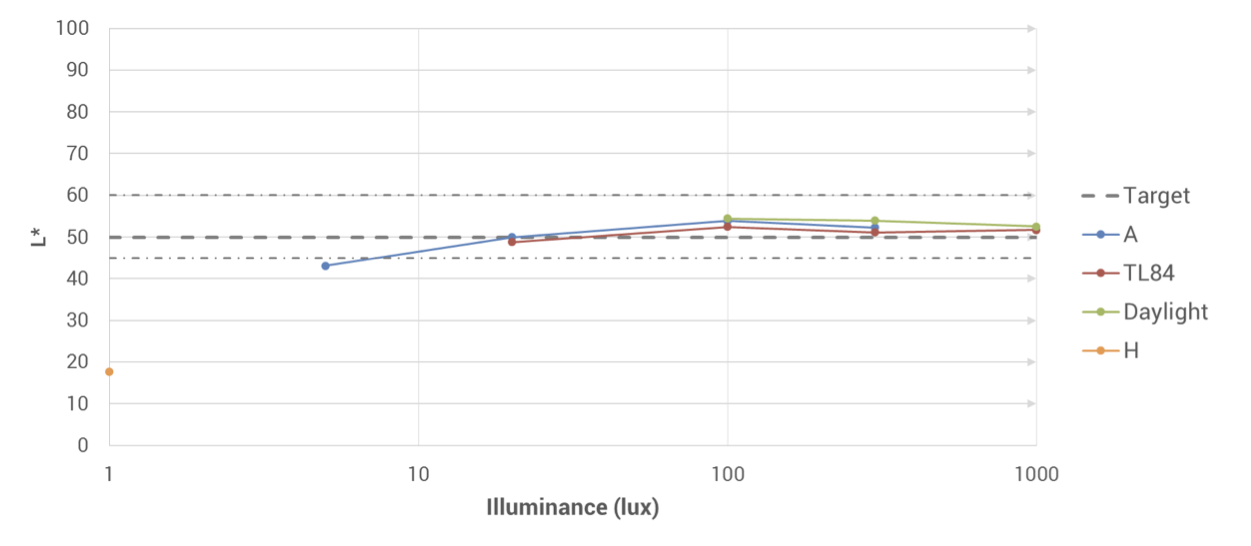




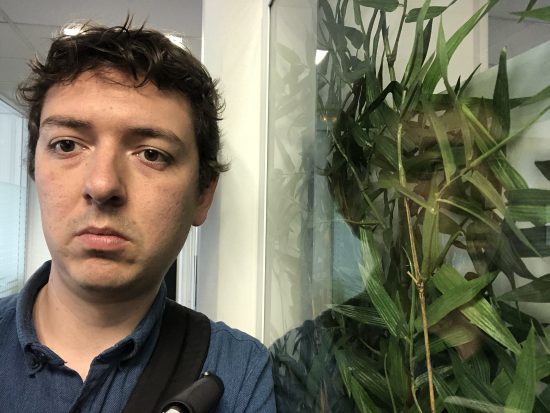
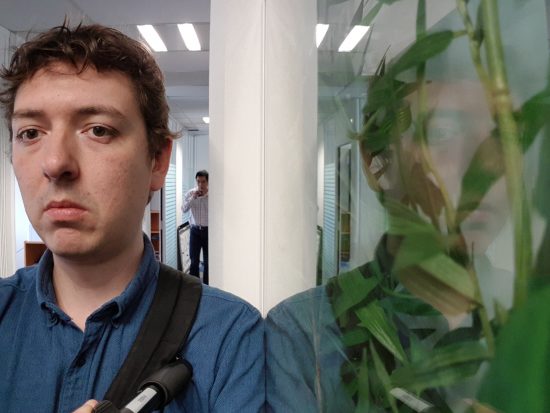
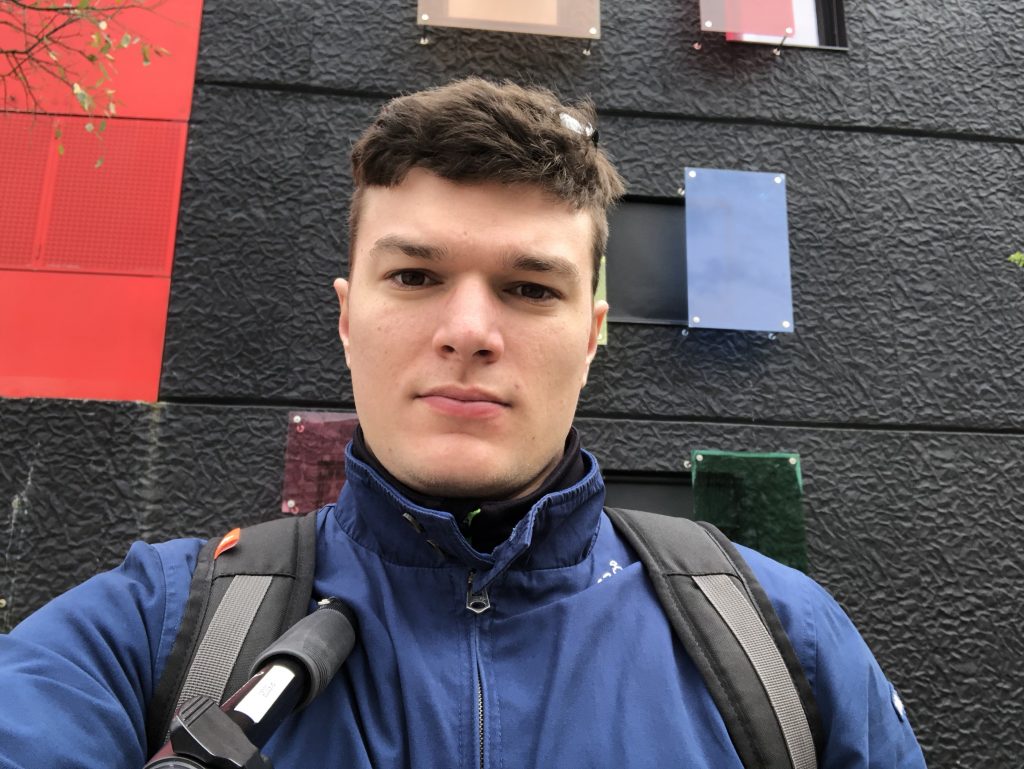
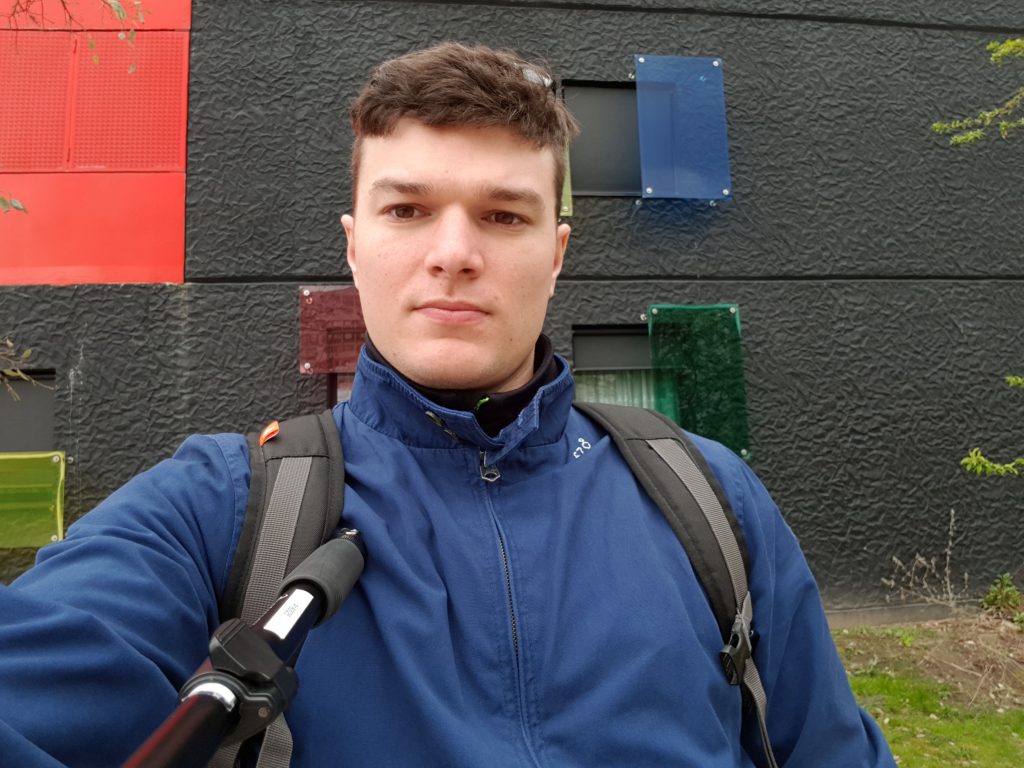
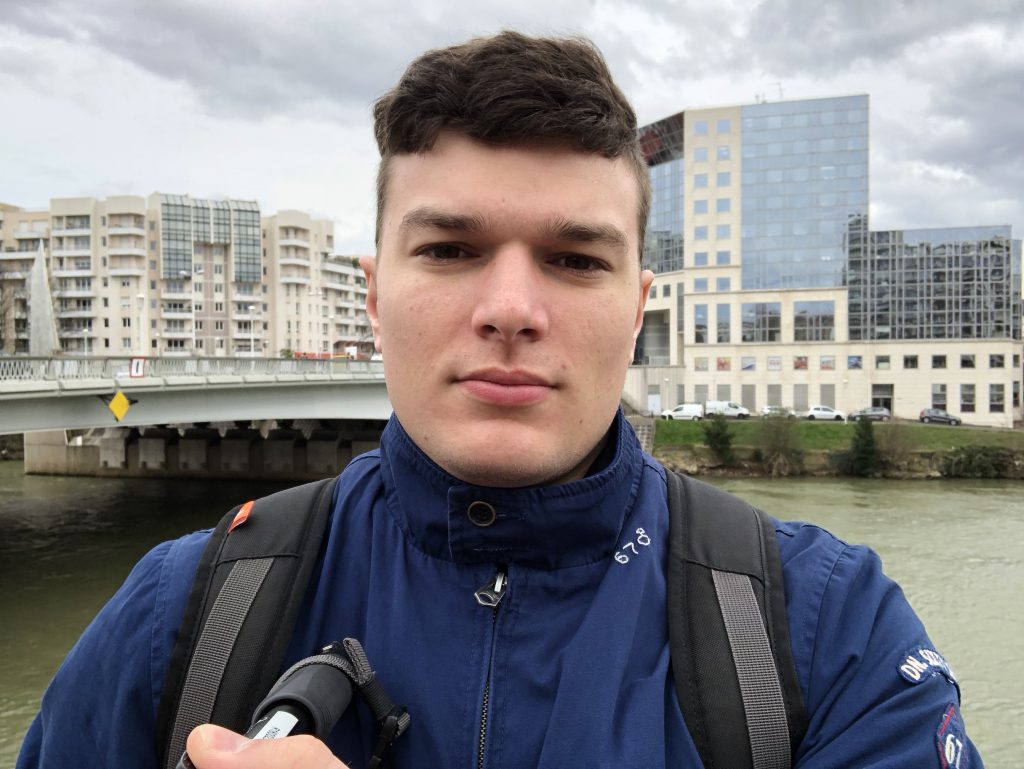
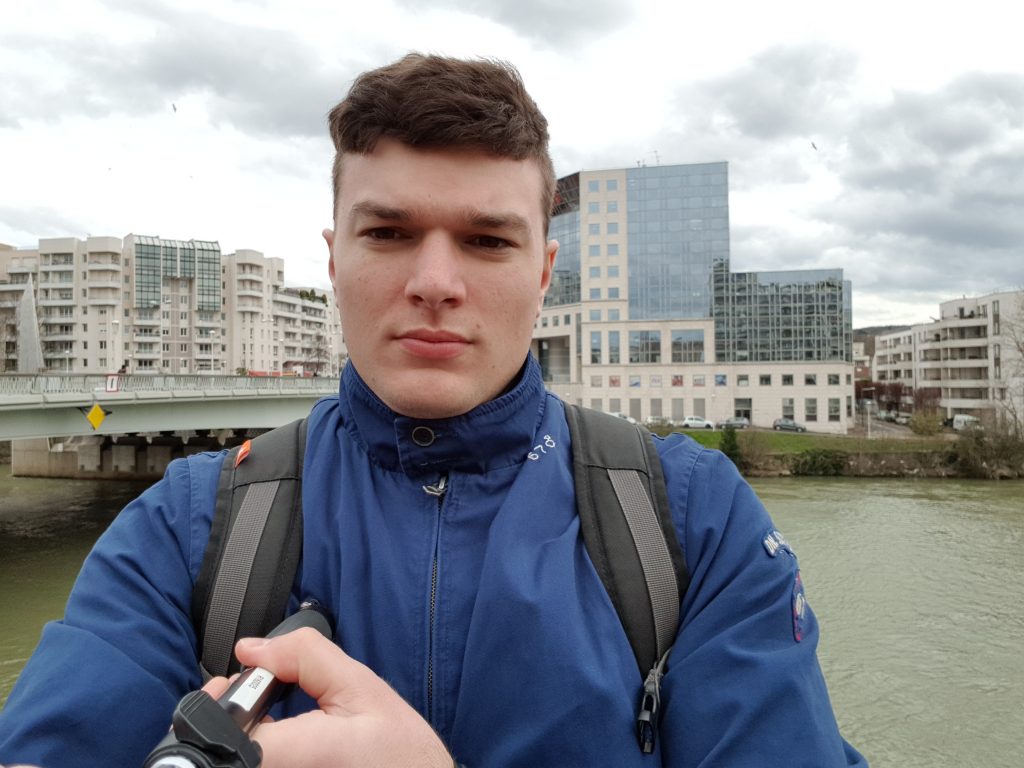
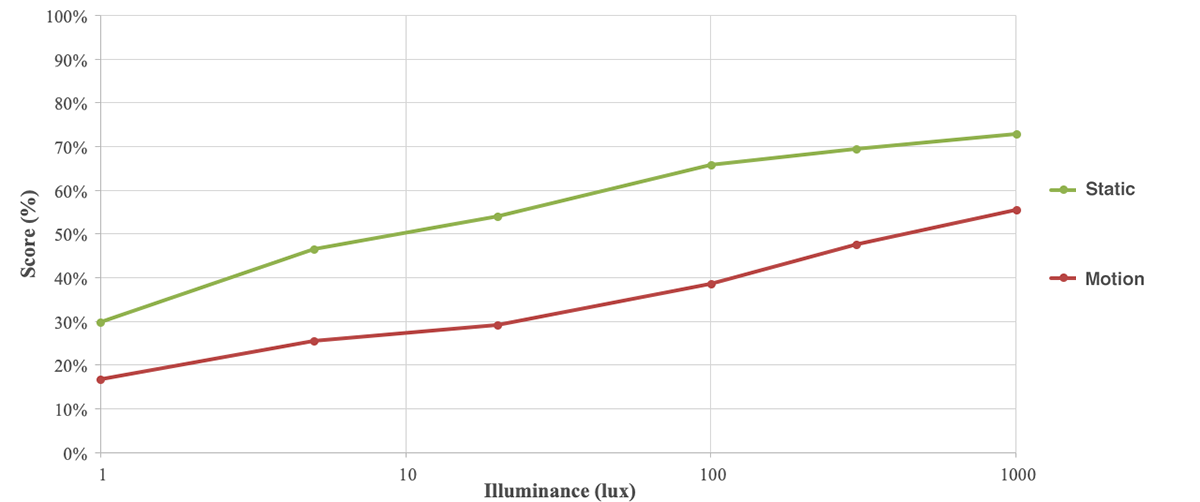

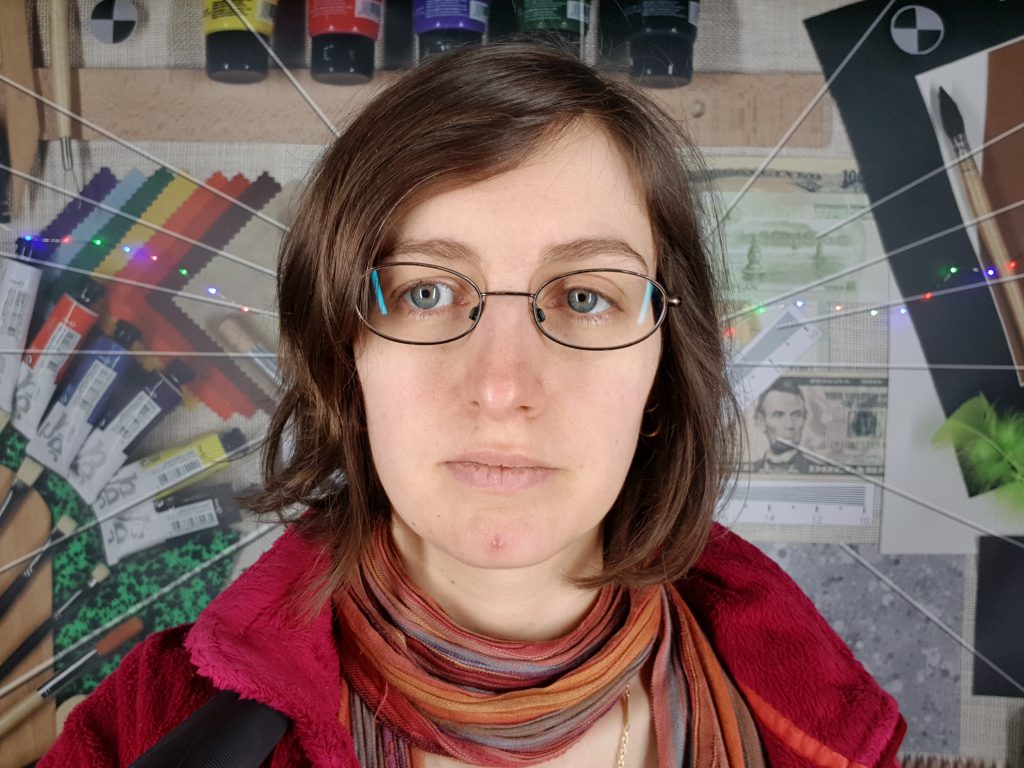

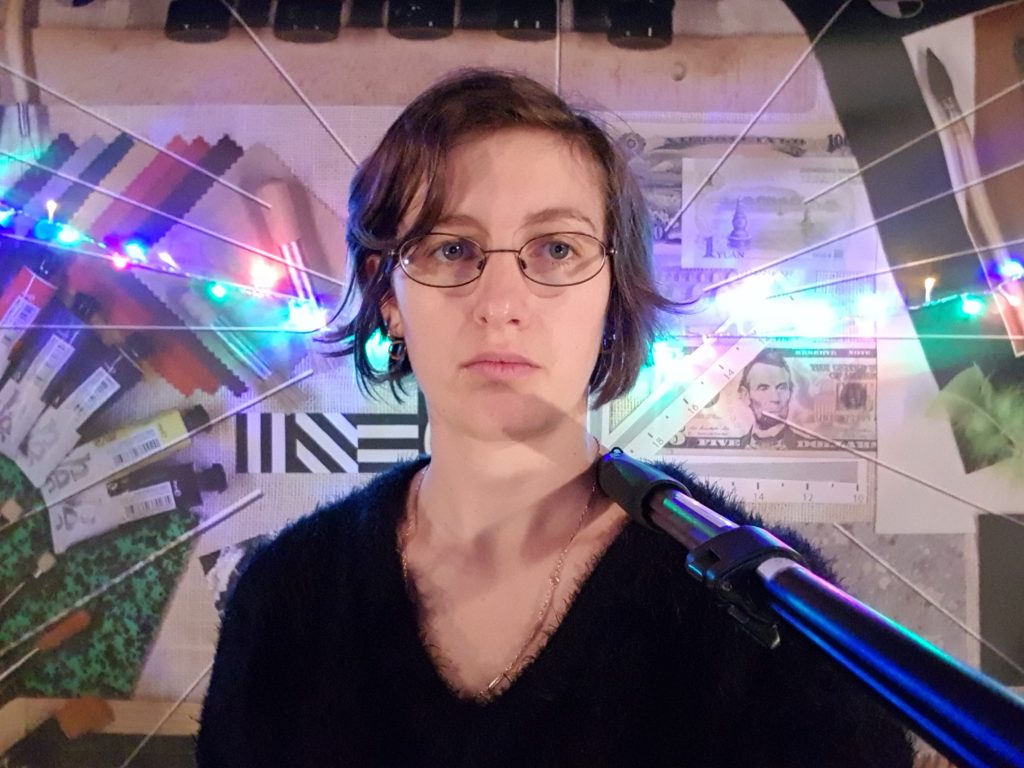
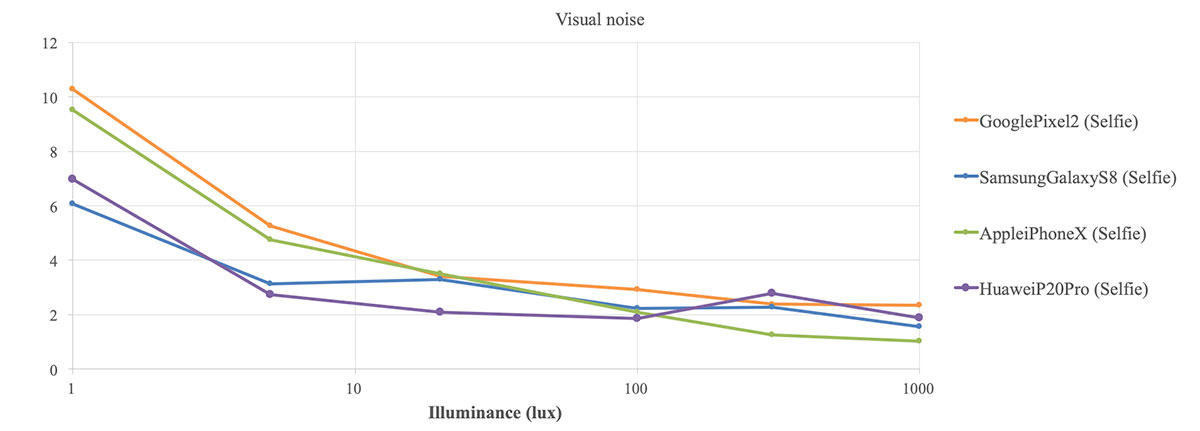
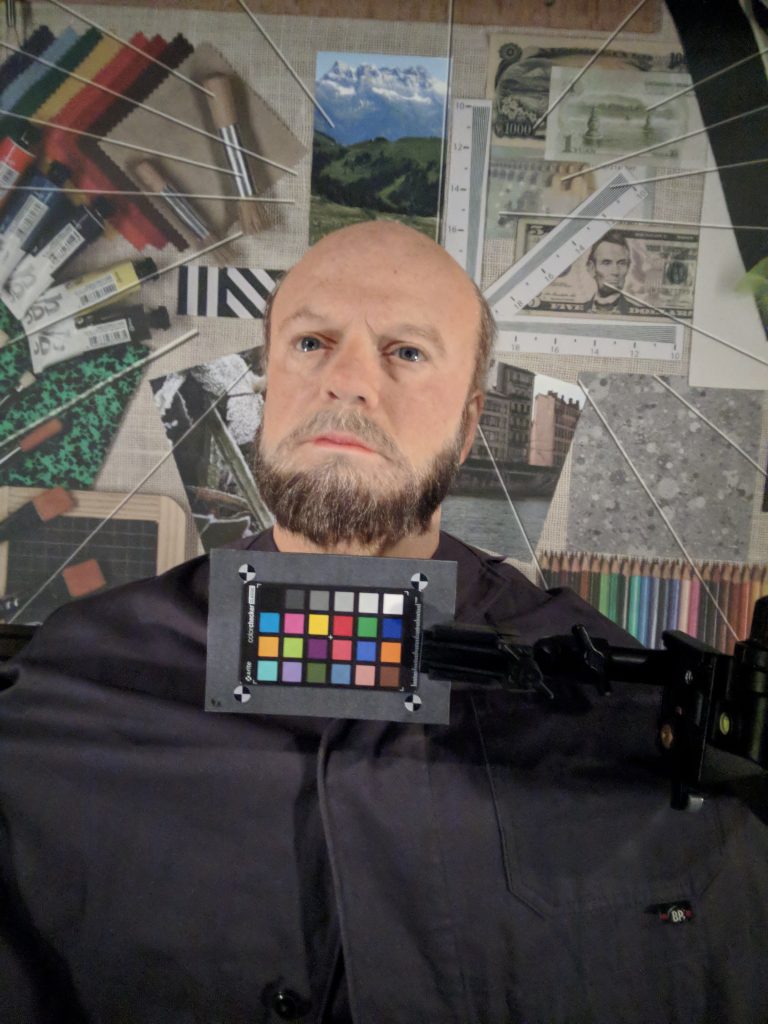
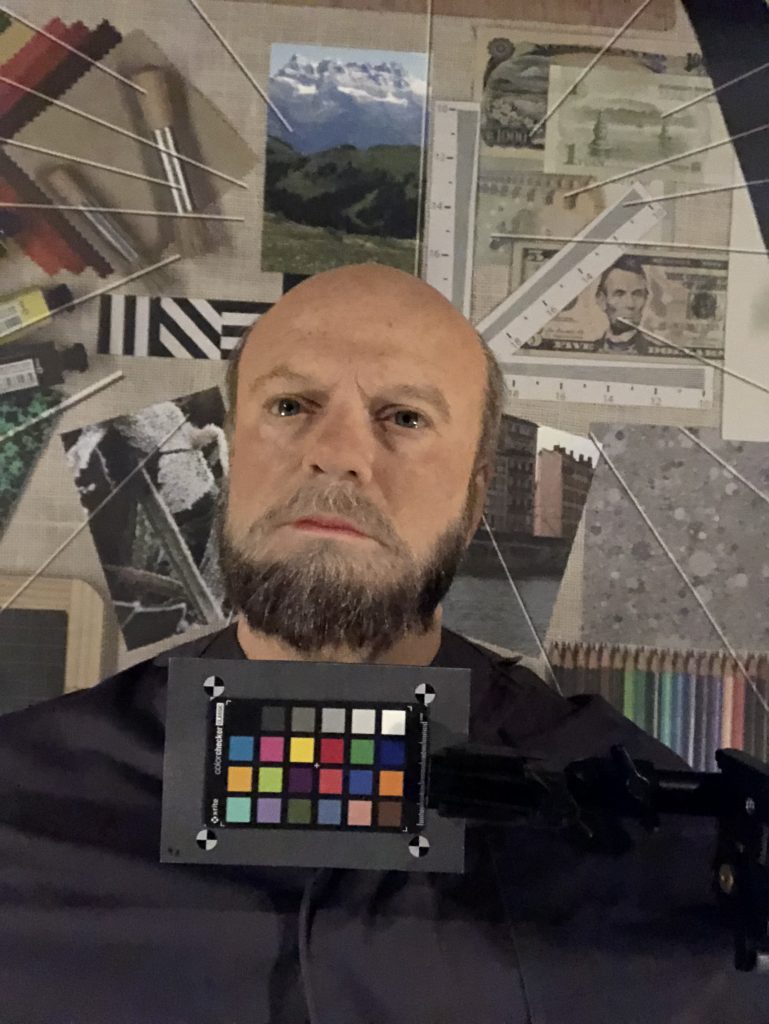
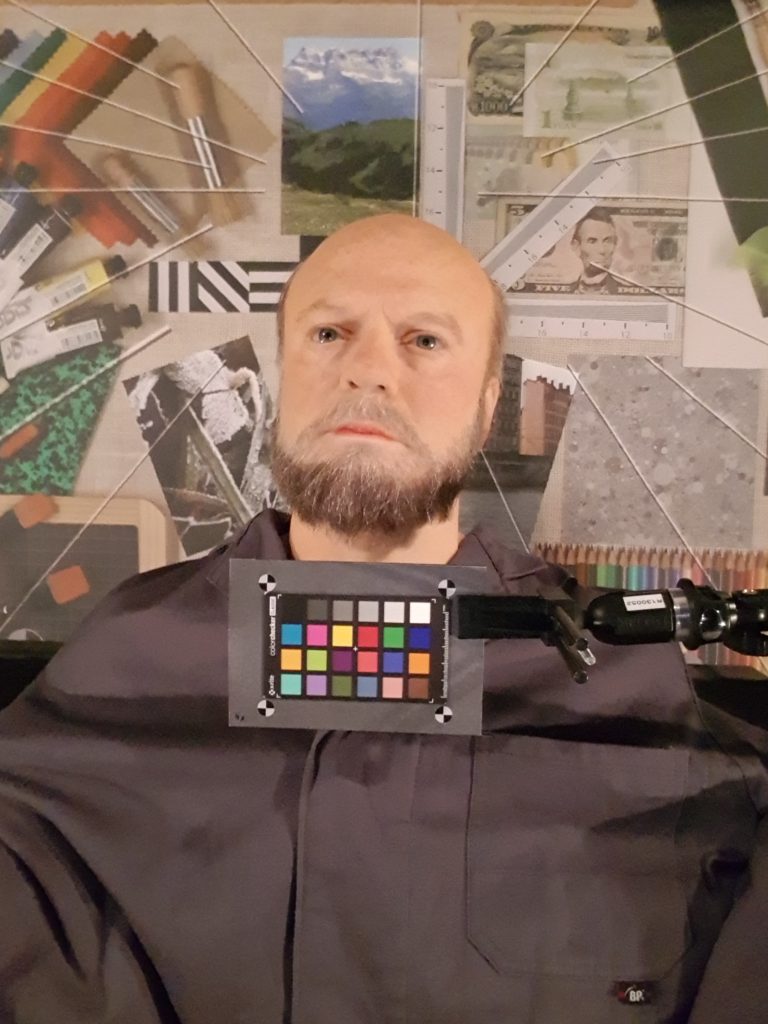

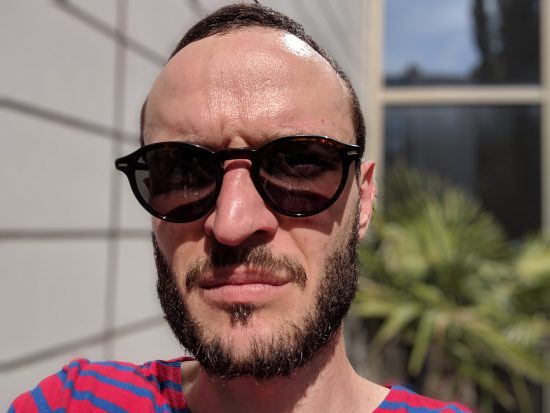

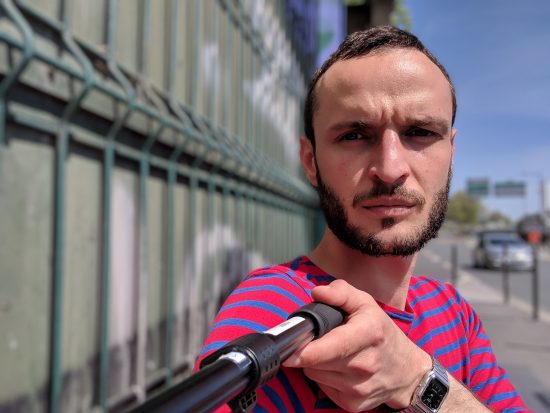
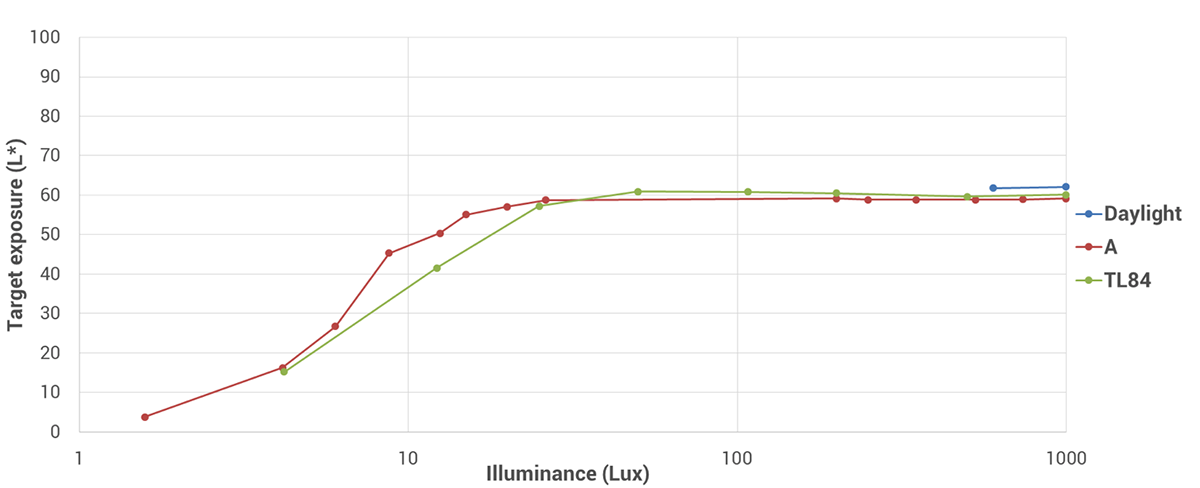
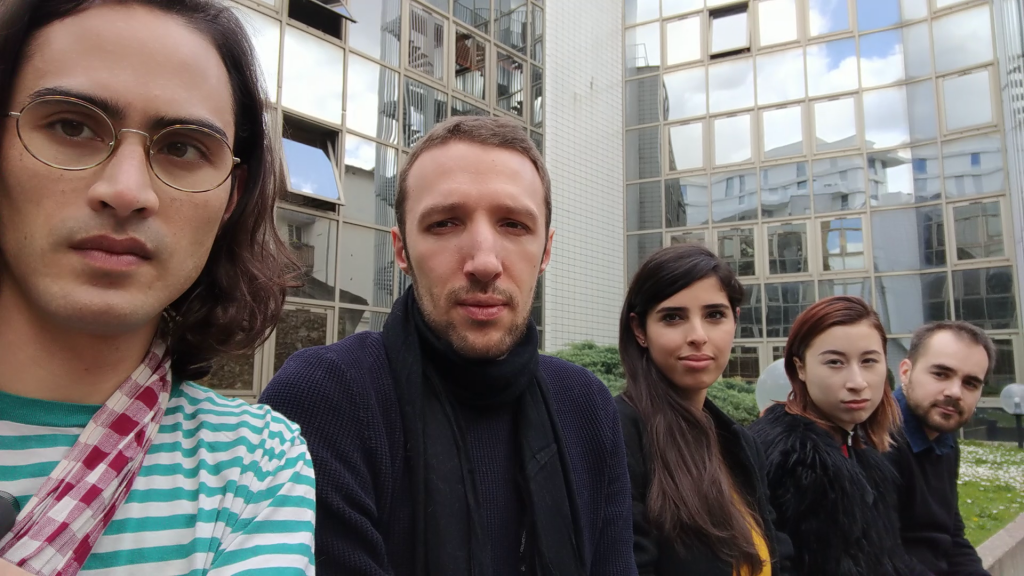
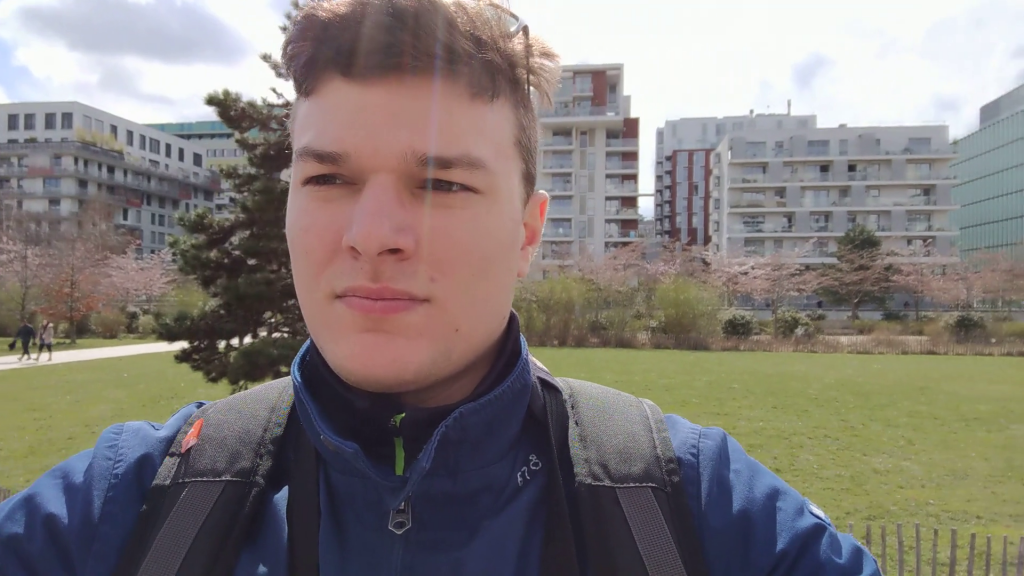
DXOMARK encourages its readers to share comments on the articles. To read or post comments, Disqus cookies are required. Change your Cookies Preferences and read more about our Comment Policy.